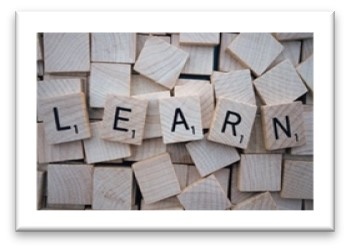|
| |
Professional Growth Through Peer Observation and Idea ImplementationBy Patrick T. Randolph
Introduction Class observations are extremely important for teachers’ professional growth and personal development. However, the mere idea of these observations is often met with unwanted stress and anxiety. This teaching suggestion offers a new approach for undertaking and using peer observations for teachers in Intensive English Programs (IEPs). First, I briefly discuss the predominant class observation methods and their shortcomings. I, then, introduce a new method employed at Anglia Ruskin University (as cited in Cosh, 1998) and explain how I further enhanced that method through a process I developed, which can be used for peer observations, professional and personal development, and annual teaching portfolios. Three Standard Models of Class Observation and Their Pitfalls
In my 25 years of language teaching experience, I have seen different kinds of classroom observations for job assessment which weigh heavily on contract renewals. These, however, are not necessarily productive for professional growth, and they are often punitive in nature. There are three predominate models that are used in most IEPs. These include: (1) a director who observes and critiques a teacher; (2) a peer who observes and critiques a teacher; or (3) a director/assistant director and a peer who observe and critique a teacher. A major issue with these kinds of observations is that very few instructors actually incorporate the observer’s suggestions in their classes (Cosh, 1998; Randolph, 2018; Wajnryb, 1992). The instructors feel it best if the changes come from their own discoveries and growth as teachers. In addition, the comments often given by the class observer are not necessarily accurate because the observers are not always aware of particular dynamics in the class or what was previously taught and how the observed class ties in with the overall course content and flow (Cosh, 1998; Randolph, 2018). In short, these models are not effective in terms of enhancing professional development nor personal growth. An Alternative: Peer Observation as Professional Development—
A New Form of Collaborative Growth and Assessment Class observations do not have to be stressful experiences; on the contrary, they can be productive and supportive ways to grow and gain pedagogical insights. One of the most effective types of class observations I have researched comes from Anglia Ruskin University in the United Kingdom. Instead of using the class observations for assessment, they use them for professional development. According to Cosh (1998), “[w]e are observing in order to reflect upon our own teaching and for active self-development, rather than to make judgements upon others” (p.173). In order to attain that goal, the faculty at Anglia Ruskin University set up the following system. First, teachers pair up and make two class observations each year. There is no set focus regarding what each will observe; they merely observe and record a point of interest that they learn while watching a colleague teach a class. The two colleagues later meet to discuss the insights and what they learned from each other. Then, they present their experiences at department seminars or discussion groups. The content of the observations and what was learned are also recorded and sent to the department chairs for administrative purposes (Cosh, 1998). Peer Observations and Idea Implementation
After researching this method, I created the following modified procedure. The version that I developed goes slightly beyond the Anglia Ruskin University framework because the pedagogical points learned during the observations are later implemented in the observers’ classes and also recorded for their professional development portfolios (Randolph, 2017). The Process
Two colleagues meet and agree to observe each other’s class early in the semester. Before their mutual observations, they meet to explain the content of the observed lesson. Next, they observe each other’s class and focus on one point of interest that they would like to implement in their own lessons (see the Appendix for an example of the peer observation form). The teachers then meet after each observation, discuss the point of interest, and explore how they can implement what they learned from the observations. One month later, they meet to review how each has implemented the point of interest in their own classes. In this meeting, the teachers are able to see how peer observations can be an extremely positive and effective form of professional development as they nurture ownership of their methods and improve their craft. In addition, the teachers are able to see their ideas being used in fruitful ways. The peer observation project concludes by writing up a short report for the teachers’ annual reviews or for the teachers’ portfolios. The report’s content includes the following paragraphs: Paragraph one: Explains the observation method and introduces the two colleagues who observe each other.
Paragraph two: Centers on the actual observation and the point of interest. Paragraph three: Discusses how the point of interest is implemented and examines the results. Paragraph four: Summarizes the experience of implementing the new idea/method. Paragraph five: Highlights the benefits for the teacher and the students. Concluding Remarks
Class observations do not have to be stressful experiences. On the contrary, they should be productive and enriching opportunities for the primary purpose of honing one’s craft. The peer observation and implementation method offered here helps because it benefits both the teacher and his or her students by implementing new and effective teaching methods. In addition, it can be used as a professional development opportunity, and it can also be recorded for the teacher’s portfolios or annual reviews. I encourage English language learning departments and IEPs to use this on a semester basis as it requires only a few brief meetings and one observation. These peer observations are done to promote both enhanced teaching and learning as opposed to a mere department formality or administrative review with no pedagogical implications. And, most important, these observations help teachers see how essential they are as integral members of the education community. References
Cosh, J. (1998). Peer observation in higher education—A reflective approach. Innovations in Education & Training International, (35)2, 171-176. Randolph, P. T. (2017, February 1). Elevating the image of ESL by promoting professional development. PAIS Newsletter-TESOL. Randolph, P. T. (2018, April 27). Peer observations that inspire professional development [Conference presentation]. University of Nebraska-Lincoln PIESL Professional Development Friday, Lincoln, NE, United States. Wajnryb, R. (1992). Classroom observation tasks: A resource book for teachers and trainers. Cambridge, England: Cambridge University Press. Correspondence concerning this article can be addressed to creative.ideas.4.english@gmail.com. Note: Image by www.pixabay.com. Appendix
Peer Observation as Professional Growth & Learning
Randolph © 2021  Date: Name of the Observer: Name of the Observed Peer: Class: What is one aspect that you enjoyed most about the class? What is one pedagogical aspect that you learned during the class? What is one aspect that you would like to implement in your own class? Briefly explain how you intend to do that. What is(are) the benefit(s) you hope to gain from this new idea/method? * A version of this article first appeared in the Oregon TESOL Journal. Patrick T. Randolph specializes in vocabulary acquisition, creative and academic writing, speech, and debate. Patrick has been awarded three “Best of TESOL Affiliates” (2015, 2018, and 2021). He has also received two “Best of CoTESOL Awards” for his 2017 and 2018 presentations on observation journals and creative writing. Recently, Patrick received the “Best Session Award” from MinneTESOL (2019-2021), and he has published New Ways in Teaching with Creative Writing (2020). Patrick lives with his wife, Gamze; daughter, Aylene; cat, Gable; and puppy, Bubbles, in Lincoln, Nebraska, USA. | |
| Fall 2021 - Volume 49, Issue 2 |